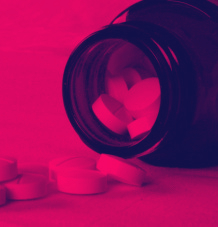AI trained on antibiotics
 An artificial intelligence system has identified a powerful new drug that can kill many species of antibiotic-resistant bacteria.
An artificial intelligence system has identified a powerful new drug that can kill many species of antibiotic-resistant bacteria.
MIT researchers have reported on a new computer model which can screen more than a hundred million chemical compounds in a matter of days.
The system is designed to pick out potential antibiotics that kill bacteria using different mechanisms than those of existing drugs.
The research team adapted a previous machine-learning computer model to analyse the molecular structures of compounds and correlate them with particular traits, such as the ability to kill bacteria.
Previously, molecules were represented as vectors reflecting the presence or absence of certain chemical groups. However, new neural networks can learn these representations automatically, mapping molecules into continuous vectors which are subsequently used to predict their properties.
In this case, the researchers designed their model to look for chemical features that make molecules effective at killing E. coli. To do so, they trained the model on about 2,500 molecules, including about 1,700 FDA-approved drugs and a set of 800 natural products with diverse structures and a wide range of bioactivities.
Once the model was trained, the researchers tested it on the Broad Institute’s Drug Repurposing Hub, a library of about 6,000 compounds.
The model picked out one molecule that was predicted to have strong antibacterial activity and had a chemical structure different from any existing antibiotics. Using a different machine-learning model, the researchers also showed that this molecule would likely have low toxicity to human cells.
This molecule, which the researchers decided to call halicin, after the fictional artificial intelligence system from “2001: A Space Odyssey,” has been previously investigated as possible diabetes drug.
The researchers tested it against dozens of bacterial strains isolated from patients and grown in lab dishes, and found that it was able to kill many that are resistant to treatment, including Clostridium difficile, Acinetobacter baumannii, and Mycobacterium tuberculosis. The drug worked against every species that they tested, with the exception of Pseudomonas aeruginosa, a difficult-to-treat lung pathogen.
Early studies suggest that halicin kills bacteria by disrupting their ability to maintain an electrochemical gradient across their cell membranes.
This gradient is necessary, among other functions, to produce ATP (molecules that cells use to store energy), so if the gradient breaks down, the cells die. This type of killing mechanism could be difficult for bacteria to develop resistance to, the researchers say.
After identifying halicin, the researchers also used their model to screen more than 100 million molecules selected from the ZINC15 database, an online collection of about 1.5 billion chemical compounds.
This screen, which took only three days, identified 23 candidates that were structurally dissimilar from existing antibiotics and predicted to be nontoxic to human cells.
In laboratory tests against five species of bacteria, the researchers found that eight of the molecules showed antibacterial activity, and two were particularly powerful.







 Print
Print